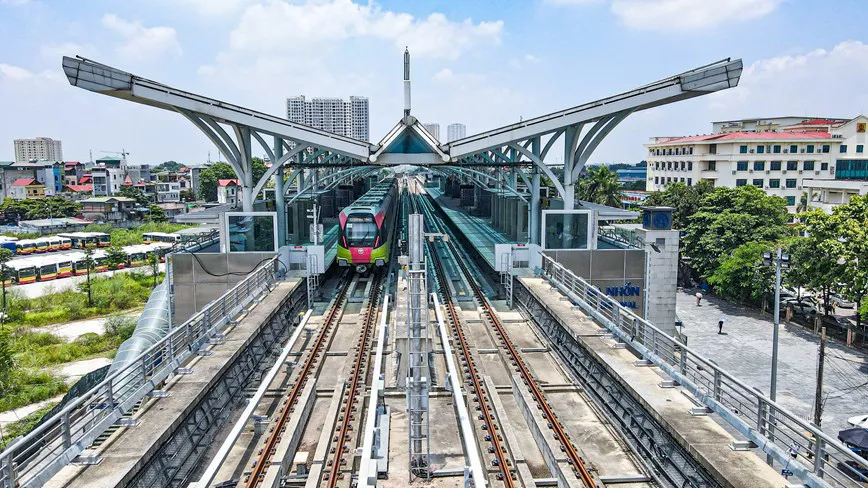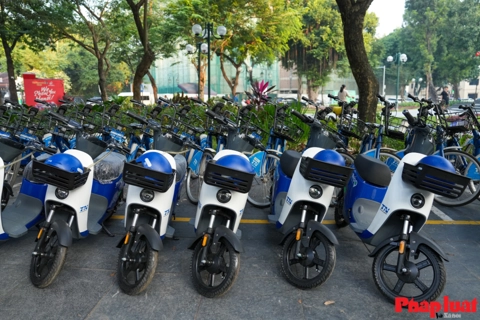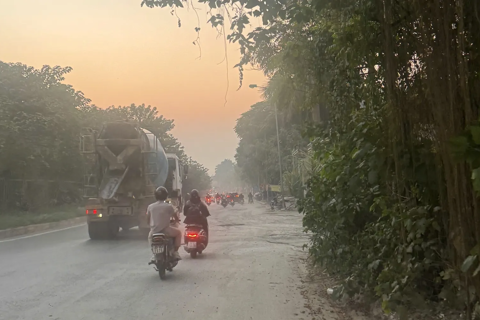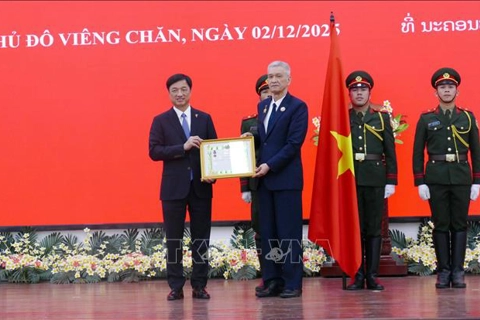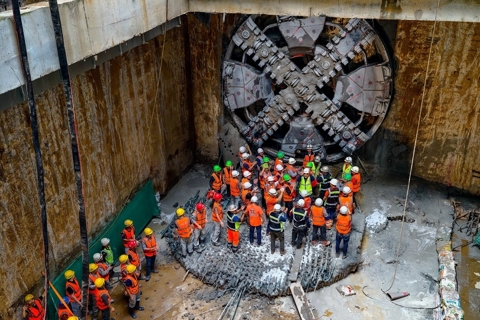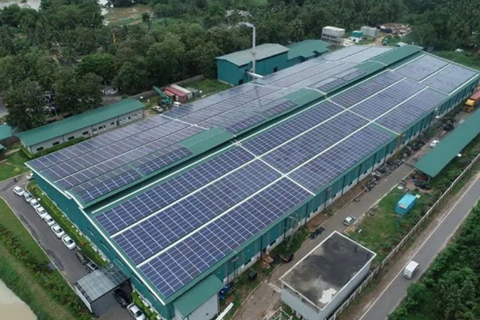Hanoi's second metro line ready for testing
The second metro line is expected to help reduce Hanoi's vehicle emissions by 20,000 tons per year.
All eight elevated stations on the Nhon-Hanoi Station metro line, the second of its kind in the capital, completes 99.5% of work, enabling the line to be ready for trial operation, according to the Hanoi Metropolitan Railway Management Board (MRB).
Deputy Head of MRB Le Trung Hieu said an elevated station is 22.5 meters high, 24 meters wide and 8 meters above the road surface, adding that all elements for the elevated section of the 8.5-kilometer Nhon-Hanoi station line have been built.
A train is being tested on the Nhon-Hanoi station metro line. Photo: Ngoc Trang/The Hanoi Times |
The elevated sections are expected to be commercially operational in 2023 and the metro line could be open to traffic by the end of 2027.
The eight stations are named after the geographical locations through which the metro line passes, including Nhon, Minh Khai, Phu Dien, Cau Dien, Le Duc Tho, National University, Chua Ha, and Cau Giay. Each elevated station is also designed with iconic images of the capital city to promote Hanoi's culture and values.
"In the coming period, we will test the line's reliability, availability, maintainability, and safety. In the next phase, MRB will continue to complete the remaining items to ensure that the operation of the system meets international standards. This is also an architectural highlight in the western part of the city," Hieu told The Hanoi Times.
He added that the metro line test will go through five scenarios, including a total power outage on the line, a partial power outage on the line, a secondary power source outage, the detection of a fire in the station, and the operation of emergency vehicles.
The Nhon-Hanoi Station metro line, funded by the French government through the Agence Française de Développement (AFD) and the European Investment Bank (EIB), has a total length of 12.5 kilometers and passes through eight elevated stations (from Nhon to Cau Giay) and four underground stations (from Cau Giay to Hanoi Railway Station).
The project was launched in September 2010 at an estimated cost of EUR783 million (US$820.3 million), which was subsequently revised to EUR1.1 billion (US$1.15 billion) in 2014, with the overrun being mainly covered by official development assistance (ODA) funding from France.
The second metro line is expected to help reduce Hanoi's vehicle emissions by 20,000 tons per year, which remains a pressing issue for the city, especially since the capital's administrative boundary expansion 15 years ago. The city's first metro line, Cat Linh-Ha Dong, also the country's first, began operating in November last year.

